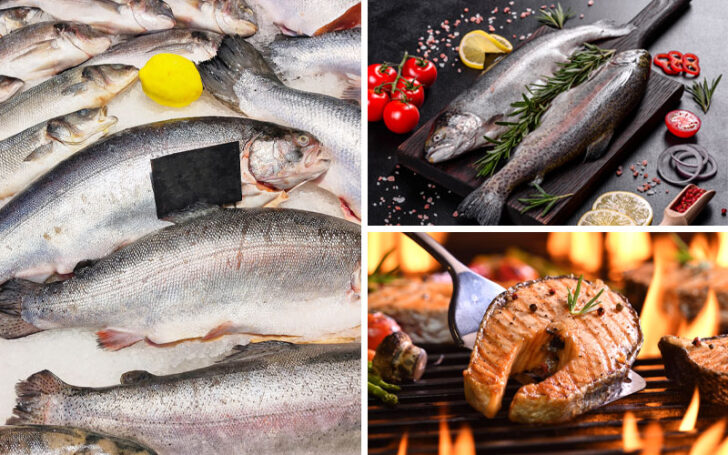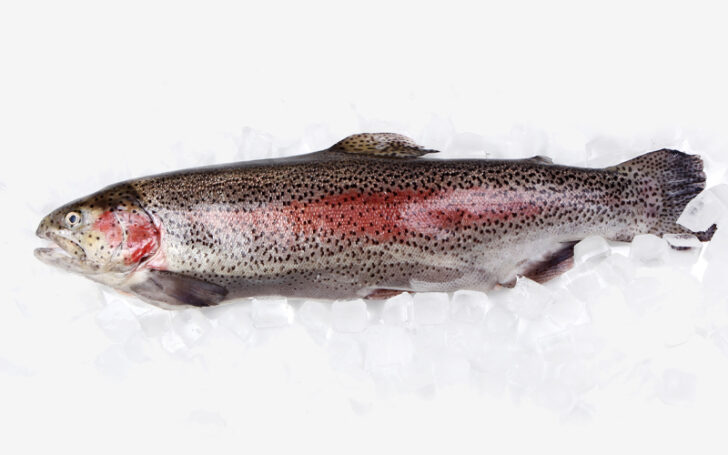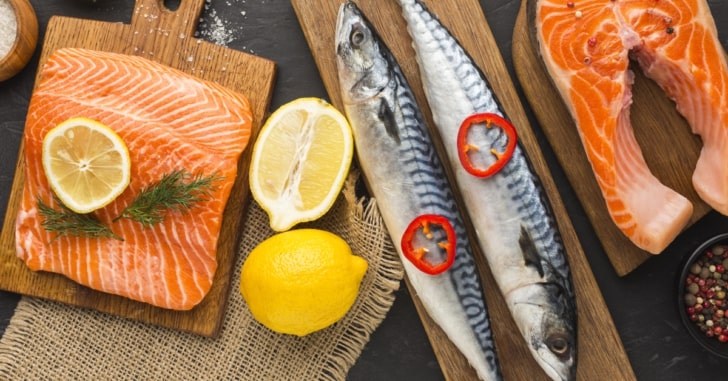In The Kitchen, Recipes
When & How to Eat Raw Salmon? Tips to Avoid Bacteria, Parasites, and Other Pathogens Risks.
While we need to be more mindful and conscious when eating surreal things like raw salmon to satisfy our taste buds, when we know that just a bowl of bat soup can lock up the entire planet.
Can You Eat Raw Salmon?
Raw salmon is love, no doubt. Either Sushi, sashimi or tartar. But it can be a reason to transfer bacteria, Parasites and other Pathogens into your body.
A study by the CDC concluded that “Diphyllobothrium Nihonkaiense Tapeworm Larva found in wild pink salmon from Alaska in North America.“
Raw salmon and even undercooked seafood are sources of environmental pollutants. Therefore, it is highly recommended not to indulge in raw seafood for:
- Pregnant woman
- Older adults with weak immune systems
- Children with weak or strong immune systems
Who Can and How to Eat Raw Salmon?

Anyone with a healthy and immune system can eat raw salmon, but make sure you know the risks to your body.
But before you eat salmon or any raw seafood, make sure:
- It is frozen to -31°F or -35°C as appropriate.
No parasite can survive in freezing temperatures. Check the texture of your salmon to see if it is perfectly frozen.
Salmon that looks moist with no bruising, discoloration or foul odor is great to eat raw, but avoid it if your skin has bruises and wrinkles and it has an unpleasant odor.
- Salmon is obtained from fresh water.
This will not cause pollution of human waste and environmental pollution.
- Salmon is cooked.
Even undercooked salmon is dangerous.
Raw Salmon Health Risks:

Research and real-life examples show that:
- Asian and Alaskan Salmon Contain Parasites and Bacteria
- Raw Salmon can cause viral infections
- Chronic problems such as HIV and cancer are also associated with eating Raw Salmon.

Details are here:
1. Raw Salmon Can Transmit Viruses like Hepatitis A & Norovirus:
Not just two, raw salmon contains as many viruses as you can count, and some of them can be extremely harmful to the human body.
These viruses can cause problems such as:
- salmonellosis
- intestinal infections
- Difficulty breathing
- Muscle paralysis
- HIV
The study shows that seafood from contaminated human waste contains viruses and can be avoided by ensuring that salmon is sourced from fresh, clean water.
2. Parasites Like Japanese Tapeworm Are Found in Raw Salmon:
Salmon carry Japanese tapeworms, which can transfer, stay and grow up to 30 meters in a human body. my god!
This tapeworm can cause problems such as:
- Weight loss
- abdominal pain
- diarrhea
- Anemia
In rare cases, a person with a parasitic worm may show no symptoms.
To avoid this, freeze-cook salmon at 145 degrees Fahrenheit or at a certain temperature. By doing this, these bacteria and parasites can be killed.
3. Raw Salmon Yield Carries POP (Persistent Organic Pollutants):
Salmon and other fish breed in polluted waters, carrying inorganic pesticides, chemicals and flame retardants in their fatty tissues.
These pollutants can cause:
- reproductive disorders
- cancer
- immunity decrement
By cooking salmon, we can reduce the risk of organic contaminants by up to 26%.
Solution:
Salmon itself is not harmful, but it is a very tasty fish to enjoy in Sushi and other famous Japanese and Chinese cuisines.
However, the water in which the salmon grows or breeds plays a role in making it something healthy to eat or avoid.
So when you eat raw salmon, make sure it is harvested from fresh, clean water that does not contain human waste or inorganic chemicals and materials.
You should also avoid eating raw salmon if you are under 14, an older adult, or a woman with a baby.
Also, don’t forget to pin/bookmark and visit our blog for more interesting but original information.

woow. amazing!